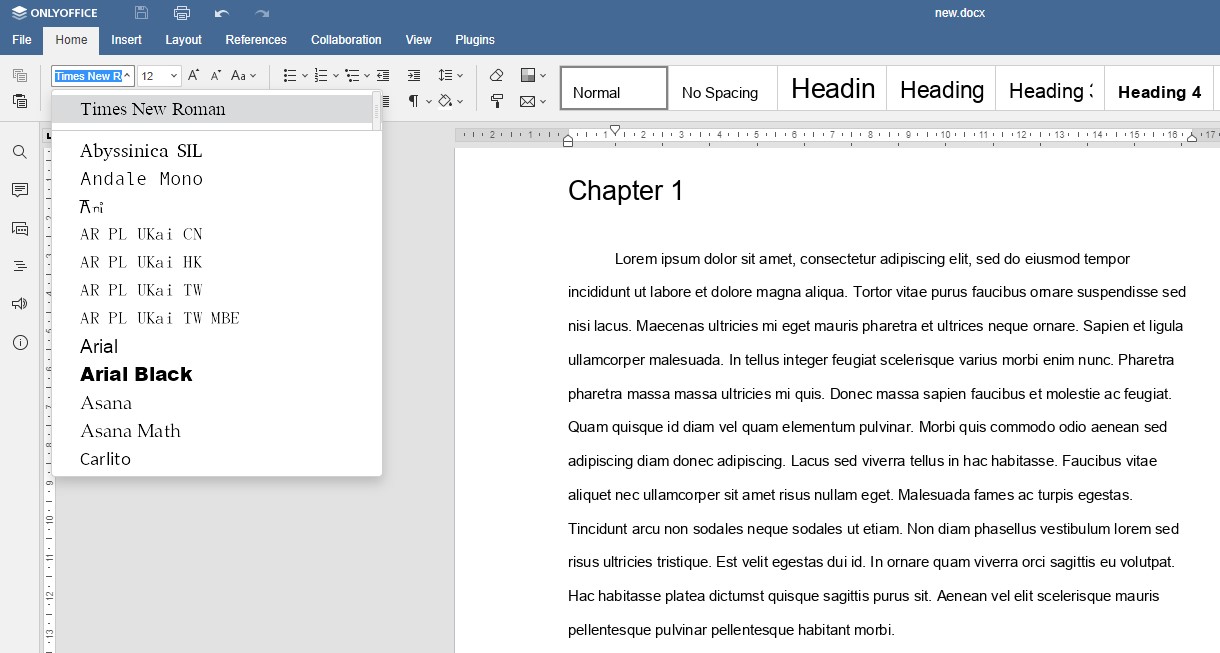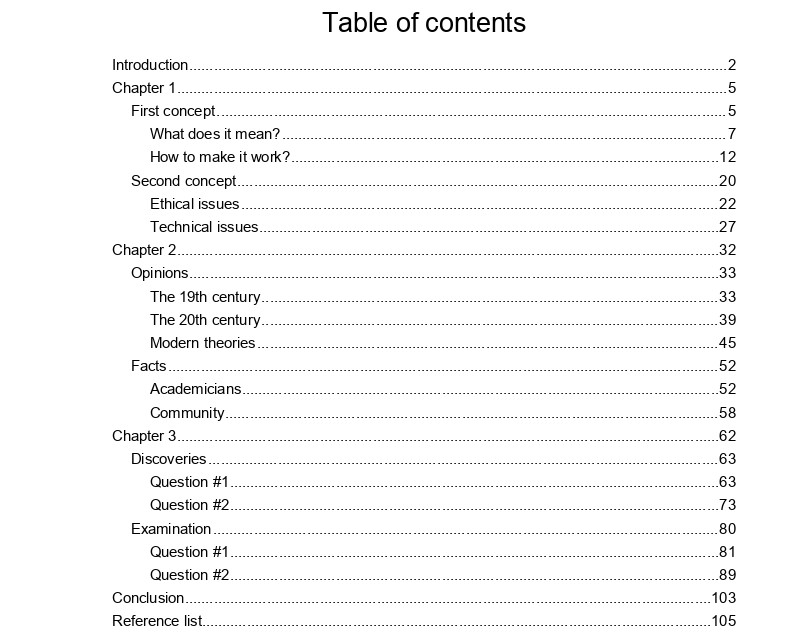What is academic writing: guide to formatting research papers
Struggling with your first research? We know that academic writing may seem daunting and even boring sometimes. To help you out, we’ll explore some common examples of such works in a school, typical requirements to the formatting, and common mistakes to avoid.

Academic writing definition
In fact, every paper that conveys ideas for research and stimulates arguments around a topic is a piece of academic writing. We don’t mean, of course, that the whole paper is handwritten. Today, they’re all composed in text editing software, such as ONLYOFFICE Desktop Editors.
Academic writing doesn’t necessarily contain game-changing discoveries, as some students believe. Its purpose is not only to bring new ideas to the researched field of study, but also to discuss the existing ones. Experienced researchers know the importance of systematization and further examination of accepted theories, and academic writing helps synthesize new knowledge from these assets.
Academic writing style
The objectives of scholarly texts determine the characteristics of academic writing. Make sure to stick to the general standards, if you want your research to be accepted.
Formal expressions
The first thing you should keep in mind is that academic texts tend to be more formal than professional writing or everyday letters. Here are some basic tips to follow:
- Avoid contractions (“et cetera” instead of “etc.”)
- Do not use colloquial and informal words (unless they are not an object of your research and used as examples)
- Use academic clichés: “according to…”, “the results show that…”, “based on the recent study”
- Avoid generic words and unrelated reflections
- Prefer passive voice in academic writing (over “I”, “me”, “us”)
- Check spelling
Words and phrases used in academic publications may seem too complicated when compared to our daily speech. However, generally understandable terms in papers are vital for researchers. Consider it an academic slang.
Precise, but cautious statements
Do not be too wordy. Research is not just the number of pages or paragraphs you need to hit by stuffing the text with irrelevant information. State and explain your opinion in a clear and concise way.
At the same time, avoid being too unambiguous. Remember that even the most evident theory is just a theory, unless it is proved by numerous and unrivaled facts. To introduce an opinion, there are some cautious words – “seems”, “likely”, “may”, “could”.
Text structure
Any academic writing must be well-structured. The best practice is to talk to your advisor and plan steps of the research as precisely as possible, from the beginning to the end. Based on such plan, you’ll create a table of contents with logically interconnected parts. The table of contents will be your roadmap during the entire research.
Remember, consistency is key. Your research shouldn’t be a way to nowhere.
Objective opinions
Academic writing is different from expressing your own feelings and beliefs. Be ready to provide evidence and facts that verify everything you state. This is why researches have dozens of citations, footnotes, and large bibliographies at the end.
You shouldn’t be afraid of criticizing someone’s ideas in your work. Just make sure to remain unbiased and provide proofs for every criticism or statement.
Academic writing examples
There are many types of academic writing. They are different in size and objectives, have specific requirements, but the tone and style remain the same.
Essay
This piece of a written work is pretty familiar to any student. Essay informs about a subject or analyzes it. The structure is simple – introduction, the main body, and conclusion.
Four types of essays are:
- Narrative – tells a story
- Descriptive – illustrates an object or phenomenon
- Expository – explains something
- Argumentative – persuades readers
Essay is a short paper that rarely contains more than 1,000 words in elementary and high schools (>2,000 for undergraduate colleges and graduate schools).
Research paper
A research paper is a type of academic writing for testing students’ ability for analysis, interpretation and evaluation, based on empirical evidence. In general, it looks like an essay expanded up to 10,000 words.
Research papers are mostly written in colleges and universities.
Dissertation
Dissertation (also known as thesis) is a type of academic writing that tests your writing, research, and analysis skills. The final step in a PhD program, it is one of the longest scholarly papers. It summarizes your research and must have a specific structure in each country, so the best idea is to discuss it with your supervisor.
Dissertation often requires additional elements, such as glossary, list of images, preface, abstract, reference list and others. Because of the scientific importance, dissertations may contain over 100 pages.
Article in an academic journal
Often nice to have before defending your dissertation, articles in academic journals usually contain an annotation, the main text, bibliography, your contact info. To check all requirements, you always can contact the editorial staff.
Lab report
This paper informs about your scientific research or experiment, their objectives, methods, and results. Usually, lab reports are conducted in biology, chemistry, engineering, and other subjects where you need a laboratory to examine or test something.
How to write an academic paper?
After the overview of common examples in academic writing and some dos and don’ts for students, you want to learn some formatting requirements for your paper. Note that they may vary in different countries and educational institutions.
You can create any academic text with appropriate formatting for free in ONLYOFFICE app for Windows, Mac, and Linux.
Here are just the most popular guidelines.
Fonts and point size
Academic writing is not the best place to play with fonts. Choose Times New Roman, 12 pt. With these parameters, your text will be displayed correctly on every computer.
Where to find: Main toolbar

Margins
Set at least 1 inch for all margins at the top, bottom, left, and right sides.
Where to find: Layout tab -> Margins

Paper
If you want to print out the academic text, choose high-quality 8 1/2″ x 11″ white paper.
Double spacing
Use double spacing for text in the main body.
Where to find: Main toolbar

Pagination
The title page or Dissertation Acceptance Certificate (DAC) is often excluded from numbering. Copyright page also shouldn’t be numbered. So you begin pagination with page 2:
- double-click at the bottom of your first page,
- go to header and footer settings on the right side,
- choose the desired position for a number.
To exclude the first page, check the Different first page option.
Preliminary pages are usually marked using small Roman numbers (i, ii, iii, iv). These pages are abstract, tables of contents, preface, list of graphs, tables, and illustrations.
Where to find: Settings toolbar on the right

Table of contents
Small pieces of academic writing, such as essays, usually don’t need a table of contents. It’s always a part of dissertations, though.
Don’t create a table of contents manually. Instead, generate one automatically.
Where to find: References tab

New paragraph
One of the best practices is to make an indent at the beginning of each paragraph. It’s easy – just click Tab.
Figures, charts, and images
Any illustrations must be placed as close to their descriptions as possible. Of course, you need to insert a reference to them in your text.
Captions
If your academic writing contains images or charts, insert captions at the bottom.
Where to find: References tab

These requirements are general and some universities may roll out specific ones. Remember to consult with your advisor before handing in your work.
Download free ONLYOFFICE Desktop Editors to format any academic writing:
Want to write your thesis online? Sign up at ONLYOFFICE Personal and get your free cloud storage with integrated editors.
Final words
There are many types of academic writing, such as essay, research paper, dissertation, and others. Today, we explored some common guidelines to provide the correct style and paragraph formatting in most of them.
Because formatting requirements often depend on a specific school or country, you shouldn’t hesitate to discuss them with your advisor.
In the text editing software, such as ONLYOFFICE, you can format any academic text as required for free. No subscriptions – all features are unlocked.
Create your free ONLYOFFICE account
View, edit and collaborate on docs, sheets, slides, forms, and PDF files online.


